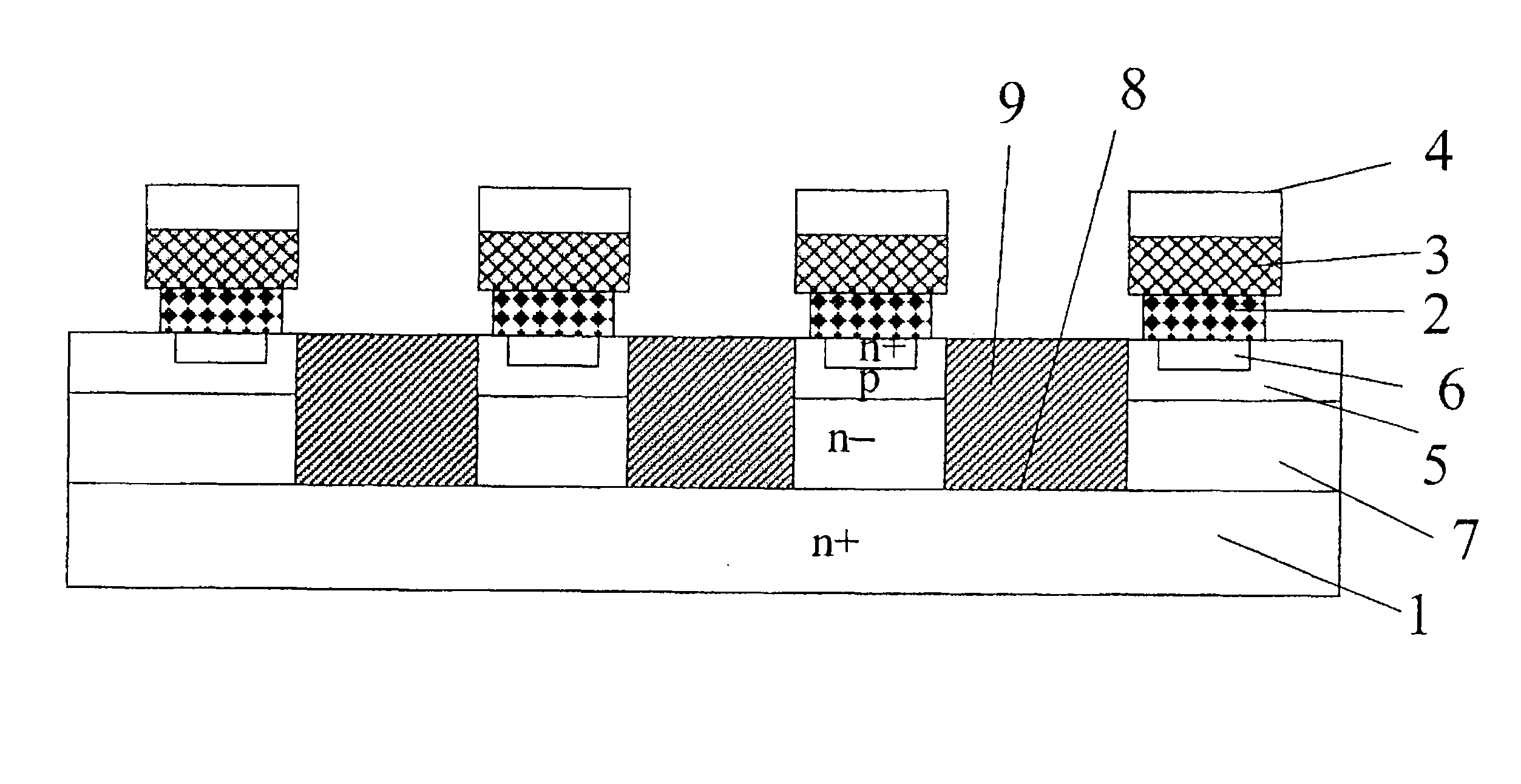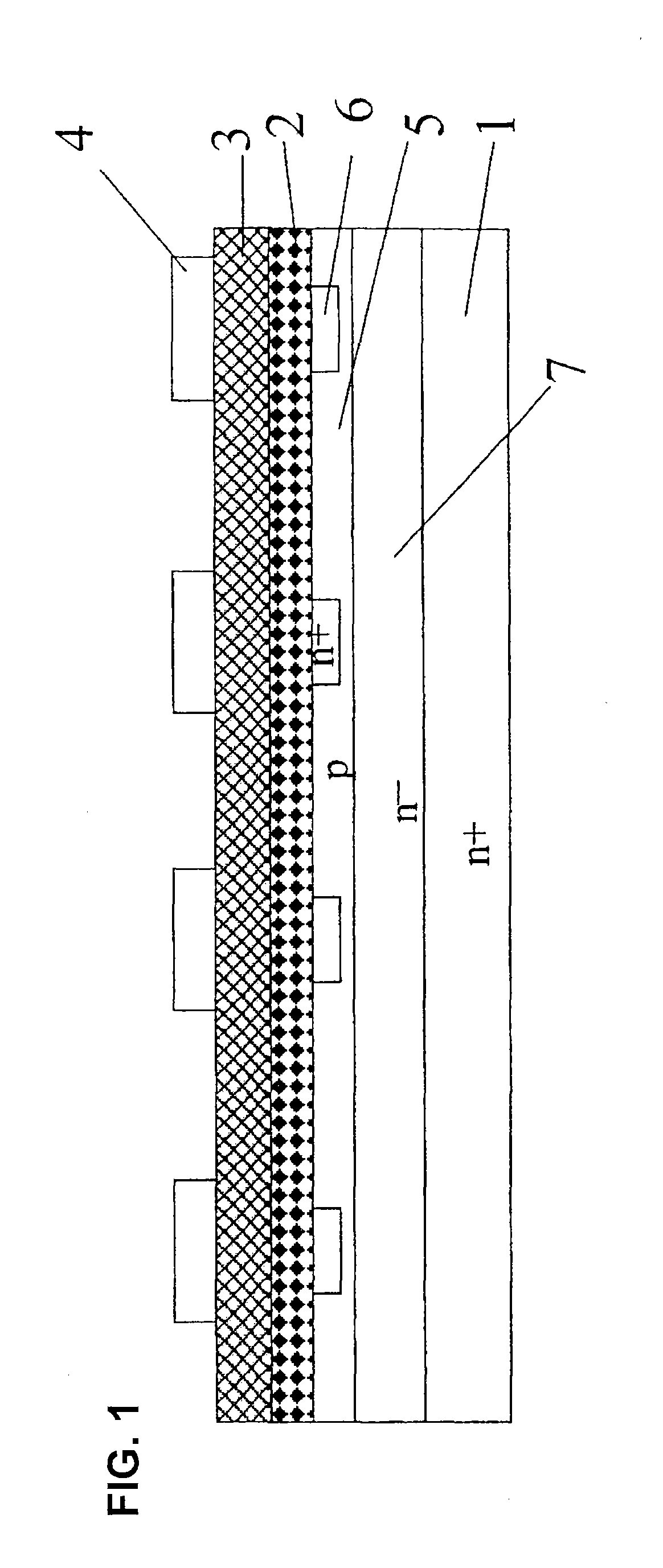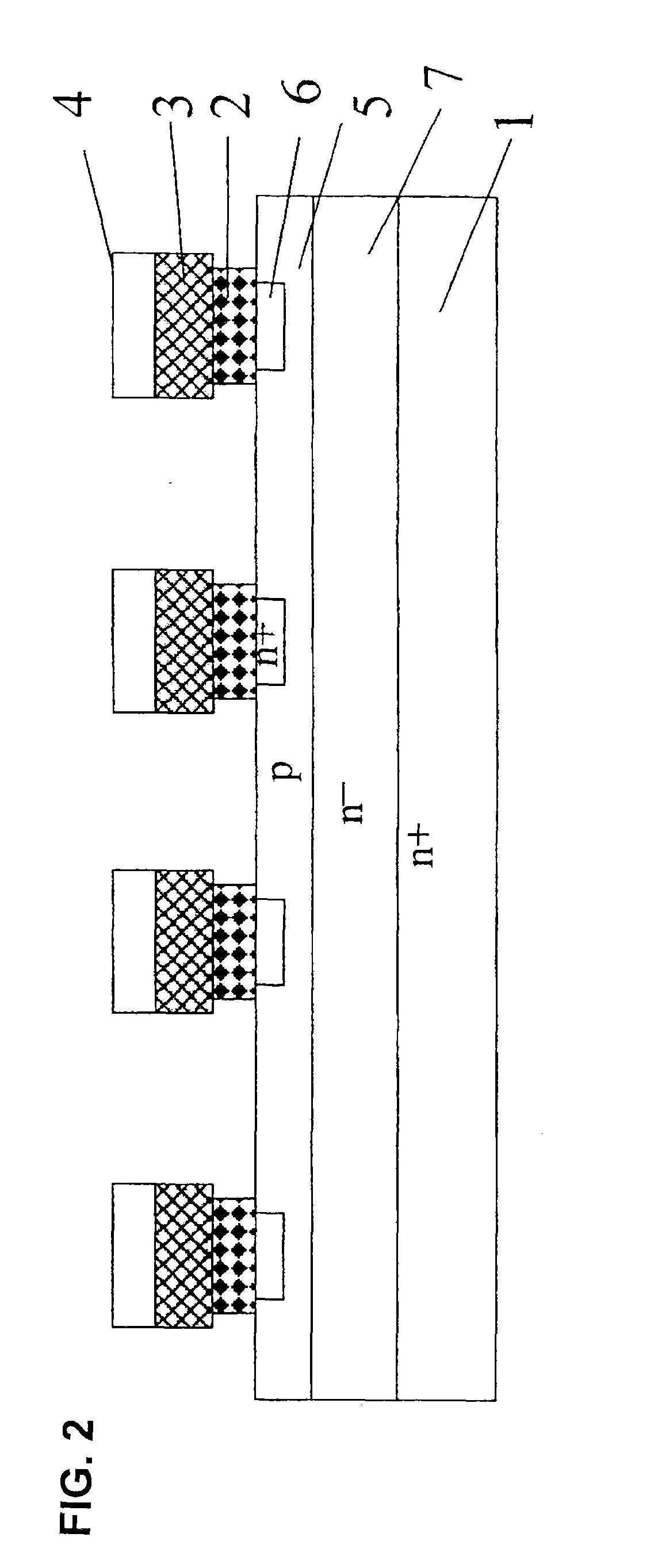Manufacturing method of a silicon carbide semiconductor device
a manufacturing method and silicon carbide technology, applied in semiconductor devices, semiconductor/solid-state device details, electrical apparatus, etc., can solve the problems of etching failure, device prone to dielectric breakdown, and actual manufacturing processes for implementing or implementing products of sic power devices still have many and various problems to be solved, so as to increase the breakdown voltage and smooth curved etched surfaces
- Summary
- Abstract
- Description
- Claims
- Application Information
AI Technical Summary
Benefits of technology
Problems solved by technology
Method used
Image
Examples
Embodiment Construction
[0024]A manufacturing method of a silicon carbide semiconductor device according to an embodiment of the invention will be hereinafter described in detail with reference to the drawings. Various changes and modifications to the following embodiment are possible without departing from the spirit and scope of the invention.
[0025]FIG. 1 is a sectional view of a silicon carbide wafer and shows a photoresist pattern. FIG. 2 is a sectional view of the silicon carbide wafer and shows a pattern of an etching mask which is a metal lamination film. FIGS. 3A through 3F are sectional views of silicon carbide wafers and shows respective etched shapes corresponding to Etching Condition 1 to Etching Condition 6, respectively. FIGS. 4A through 4C are sectional views of silicon carbide wafers which show respective etched shapes corresponding to Etching Condition 7 to Etching Condition 9, respectively. FIG. 5 is a sectional view of the silicon carbide wafer which is formed with mesa grooves.
[0026]As ...
PUM
| Property | Measurement | Unit |
|---|---|---|
| pressure | aaaaa | aaaaa |
| temperature | aaaaa | aaaaa |
| bias power | aaaaa | aaaaa |
Abstract
Description
Claims
Application Information
 Login to View More
Login to View More - R&D
- Intellectual Property
- Life Sciences
- Materials
- Tech Scout
- Unparalleled Data Quality
- Higher Quality Content
- 60% Fewer Hallucinations
Browse by: Latest US Patents, China's latest patents, Technical Efficacy Thesaurus, Application Domain, Technology Topic, Popular Technical Reports.
© 2025 PatSnap. All rights reserved.Legal|Privacy policy|Modern Slavery Act Transparency Statement|Sitemap|About US| Contact US: help@patsnap.com



